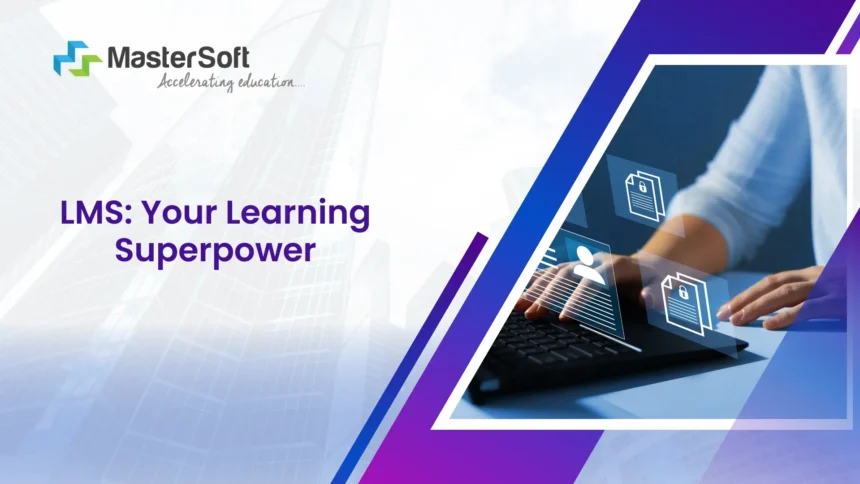In today’s rapidly evolving educational landscape, Learning Management Systems (LMS) have emerged as vital tools for managing and delivering educational content. These systems offer a range of features designed to enhance both teaching and learning experiences, making them indispensable in modern education. Whether used in schools, universities, or corporate training environments, LMS platforms are revolutionizing how we approach education and training.
In this blog, we’ll explore what a Learning Management System is, its key features, benefits, and the future of LMS technology.
1. What is a Learning Management System?
A Learning Management System (LMS) is a software application or platform that facilitates the administration, documentation, tracking, reporting, and delivery of educational courses or training programs. LMS platforms are designed to support both instructors and learners by providing a centralized space where educational content can be managed and accessed.
The core purpose of an LMS is to streamline the educational process, making it easier to organize and deliver content, track student progress, and enhance the overall learning experience.
2. Key Features of Learning Management Systems
a. Course Management LMS platforms provide tools for creating, organizing, and managing courses. Instructors can upload course materials, set assignments, create quizzes, and schedule classes. This centralized management simplifies the process of delivering educational content.
b. User Management An LMS allows for efficient user management, including the enrollment of students, assignment of roles (e.g., instructors, students), and tracking of user progress. This feature helps institutions maintain control over who has access to specific courses and content.
c. Communication Tools Effective communication is crucial in education, and LMS platforms offer various tools to facilitate this. Features such as discussion forums, messaging systems, and announcements help students and instructors interact and collaborate more effectively.
d. Assessment and Grading LMS platforms provide robust assessment tools that enable instructors to create quizzes, exams, and assignments. Automated grading features streamline the evaluation process, providing instant feedback to students and saving time for instructors.
e. Reporting and Analytics Analytics tools within an LMS offer insights into student performance and engagement. Educators can track metrics such as course completion rates, quiz scores, and participation levels to identify trends and make data-driven decisions.
f. Mobile Accessibility Many LMS platforms are designed to be mobile-friendly, allowing students and instructors to access course materials and participate in learning activities from smartphones and tablets. This flexibility supports learning on the go.
3. Benefits of Learning Management Systems
a. Enhanced Learning Experience LMS platforms provide a structured and organized environment for learning, making it easier for students to access materials, submit assignments, and participate in discussions. This enhanced experience can lead to better learning outcomes and increased student satisfaction.
b. Increased Efficiency By automating administrative tasks such as grading and tracking progress, LMS platforms save time for instructors and streamline the management of educational programs. This efficiency allows educators to focus more on teaching and less on paperwork.
c. Flexibility and Accessibility LMS platforms support a variety of learning styles and needs. With online access to course materials, students can learn at their own pace and from any location. This flexibility is particularly beneficial for non-traditional learners and those with busy schedules.
d. Data-Driven Insights The reporting and analytics features of an LMS provide valuable insights into student performance and engagement. Educators can use this data to identify areas for improvement, tailor their teaching strategies, and ensure that students are meeting learning objectives.
e. Scalability LMS platforms are scalable, making them suitable for institutions of all sizes. Whether used by a small training organization or a large university, an LMS can accommodate a growing number of users and courses.
4. Challenges of Learning Management Systems
a. Implementation and Training Successfully implementing an LMS requires careful planning and training. Institutions must invest time and resources in configuring the system, migrating content, and training users to ensure a smooth transition.
b. Technical Issues Like any technology, LMS platforms can experience technical issues, such as system outages or compatibility problems. Institutions need to have support plans in place to address these issues promptly.
c. User Adoption Getting users to adopt and effectively use an LMS can be challenging. Institutions may face resistance from educators or students who are unfamiliar with the technology or prefer traditional methods.
d. Security and Privacy Protecting sensitive data, such as student information and academic records, is a critical concern. Institutions must ensure that their LMS platforms have robust security measures in place to safeguard this information.
5. The Future of Learning Management Systems
As technology continues to advance, the future of LMS platforms is likely to involve further innovations and enhancements. Key trends to watch for include:
- Integration with Emerging Technologies: LMS platforms may increasingly integrate with technologies such as artificial intelligence (AI) and virtual reality (VR) to offer more immersive and personalized learning experiences.
- Enhanced Data Analytics: Advanced analytics capabilities will provide deeper insights into learning behaviors and outcomes, helping educators make more informed decisions.
- Increased Personalization: Future LMS platforms are expected to offer even more personalized learning paths, adaptive content, and tailored recommendations based on individual student needs.
- Seamless Integration: LMS platforms will continue to integrate with other educational tools and systems, such as student information systems (SIS) and content management systems (CMS), creating a more cohesive learning ecosystem.
6. Conclusion
Learning Management Systems have become a cornerstone of modern education, offering powerful tools for managing and delivering educational content. With their ability to enhance the learning experience, increase efficiency, and provide valuable data insights, LMS platforms are reshaping the way we approach education and training.
While there are challenges to overcome, the benefits of LMS technology make it a compelling choice for educational institutions and organizations. As we look to the future, ongoing innovations will further enhance the capabilities of LMS platforms, making them even more integral to the educational landscape.
Read More Here

